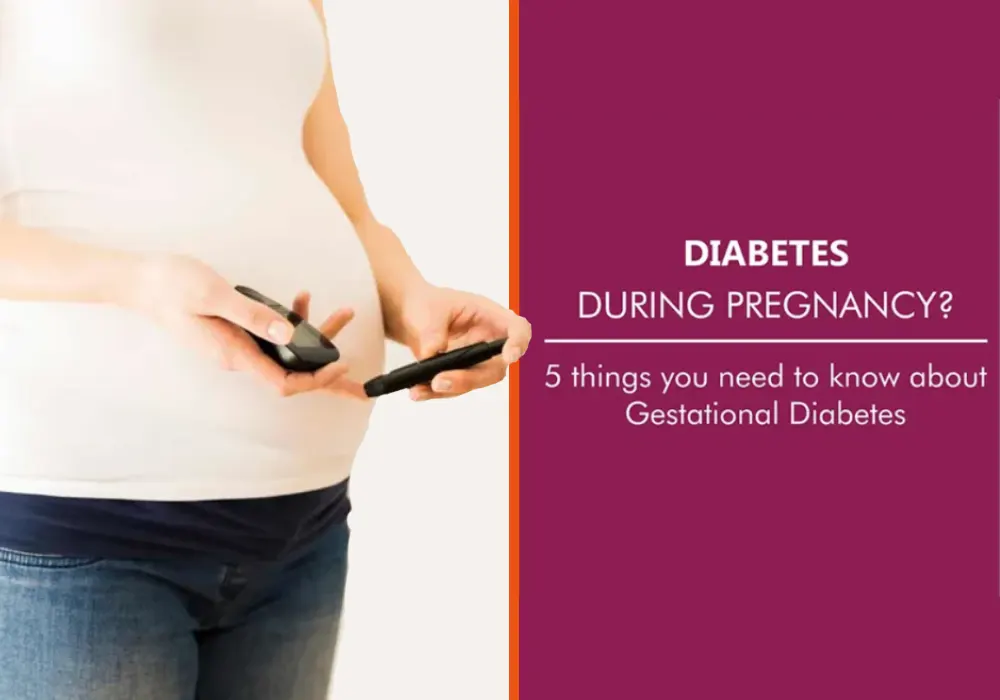Diabetes during Pregnancy? 5 things to know about Gestational Diabetes
Summary
Gestational Diabetes Mellitus (GDM) is a type of diabetes that occurs during pregnancy when blood sugar levels become too high due to the body’s inability to produce enough insulin — the hormone that regulates glucose. It can develop at any stage of pregnancy, though it is more common in the second or third trimester. In this blog post, the best gynaecologist in gurgaon at Miracles Apollo Cradle provides insight into the risk factors, symptoms, treatment options, and how GDM can affect both mother and baby. While it usually goes away after childbirth, untreated GDM can cause complications and may increase the risk of type 2 diabetes in the future.
Are you at risk of developing Gestational Diabetes?
You are more likely to develop GDM if you:
-
have a close relative who has diabetes
-
were overweight before pregnancy
-
have PCOS (polycystic ovary syndrome)
-
have had gestational diabetes during previous pregnancies
-
have high blood pressure or other medical complications that lead to diabetes
-
have previously given birth to a baby of more than 4kgs (or 8 pounds)
Symptoms of Gestational Diabetes
More often, GDM does not reflect noticeable signs or symptoms. However, a few extreme cases of Gestational Diabetes show following signs:
-
Excess thirst
-
Excess urination
-
Fatigue
-
Dryness in mouth
Treatment of Gestational Diabetes
Treating GDM is essential to prevent future health complications. It is advised to seek your Doctors advice. Your gynae doctor may ask you for:
-
regular blood sugar levels check-up
-
regular urine tests to check your insulin
-
a healthy diet
-
regular exercise
-
medication or insulin, if required.
How Gestational Diabetes affect you and your baby?
Most women with gestational diabetes have otherwise normal pregnancies with healthy babies. However, gestational diabetes may cause problems within you and your baby such as:
i) Baby
-
Preterm birth and its effects- High blood sugar level in mothers increase the risk of early labor. Preterm babies may suffer from respiratory distress syndrome (difficulty in breathing).
-
Excess birth weight- Excess glucose passes the placenta which activates baby’s pancreas to produce more insulin and hence increasing baby’s weight.
-
Hypoglycaemia after birth
-
Breathing problems in a baby
ii) You
-
Preeclampsia- a serious complication in pregnancy that causes high blood pressure and other symptoms that can threaten the lives of mother and baby both
-
Type 2 diabetes- Gestational diabetes during pregnancy may cause type 2 diabetes in mothers in a future life if left untreated. This further leads to heart disease, kidney disease, and nerve damage.
Planning Future Deliveries
For previous pregnancies with GDM, it is advised to get checked for diabetes in future pregnancies. If you are diagnosed with diabetes, then your doctor will ensure your diabetes is under-control before you conceive. Always, take care of a few points in case you had GDM during any of your earlier pregnancies:
-
Make sure you inform your Doctor about your GDM
-
Regular blood glucose levels check is helpful by simply using a finger-pricking device
-
Maintain a healthy lifestyle
Conclusion:
Gestational Diabetes Mellitus (GDM) is a temporary but serious condition that needs timely attention and care. While it often resolves after childbirth, ignoring it can increase health risks for both mother and baby. With proper monitoring, a balanced diet, regular exercise, and medical guidance, most women with GDM go on to have safe pregnancies and healthy babies. If you have risk factors or a history of gestational diabetes, make sure to discuss it with a maternity doctor near you early in pregnancy. Proactive care today can help protect your health and your baby’s future.
Frequently Asked Questions
You are more likely to develop GDM if you:
- have a close relative who has diabetes
- were overweight before pregnancy
- have PCOS (polycystic ovary syndrome)
- have had gestational diabetes during previous pregnancies
- have high blood pressure or other medical complications that lead to diabetes
- have previously given birth to a baby of more than 4kgs (or 8 pounds)
More often, GDM does not reflect noticeable signs or symptoms. However, a few extreme cases of Gestational Diabetes show following signs:
- Excess thirst
- Excess urination
- Fatigue
- Dryness in mouth
It is a condition where blood sugar levels rise during pregnancy, which needs careful monitoring to keep both mother and baby safe.
Hormonal changes in pregnancy can make the body resistant to insulin, leading to higher blood sugar levels.
The classic 3 P’s are Polydipsia (excessive thirst), Polyuria (frequent urination), and Polyphagia (increased hunger).
Most babies are healthy if the condition is managed well, but uncontrolled GDM may cause complications like high birth weight or breathing issues.
Limit sugary foods, refined carbs, fried items, and sweetened drinks that can spike blood sugar.
In most cases, blood sugar levels return to normal after delivery; however, follow-up checks are still important.
Yes, many women can have a normal vaginal delivery if their blood sugar is controlled, though doctors may recommend monitoring closely.
Typically, there are no symptoms; however, warning signs may include extreme thirst, frequent urination, fatigue, and dry mouth.

















Was the information useful?
54 12